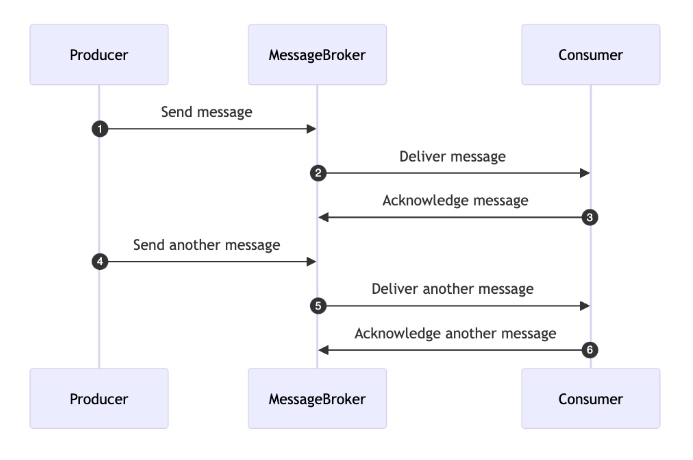Improving healthcare fraud prevention and patient trust with digital ID

Digital trust involves the use of secure and transparent technologies to protect
patient data while enhancing communication and engagement. For example, digital
consent forms and secure messaging platforms allow patients to communicate with
their healthcare providers conveniently while ensuring that their data remains
protected. Furthermore, integrating digital trust technology into healthcare
systems can streamline administrative processes, reduce paperwork, and minimize
the chances of errors, according to a blog post by Five Faces. This not only
enhances operational efficiency but also improves the overall patient experience
by reducing wait times and simplifying access to medical services. ... These
smart cards, embedded with secure microchips, store vital patient information
and health insurance details, enabling healthcare providers to access accurate
and up-to-date information during consultations. The use of chip-based ID cards
reduces the risk of identity theft and fraud, as these cards are difficult to
duplicate and require secure authentication methods. This technology ensures
that only authorized individuals can access patient information, thereby
protecting sensitive data from unauthorized access.
A CEO's Take on AI in the Workforce

Those ignoring the AI transformation and not uptraining their skilled staff are
not putting themselves in a position to make use of untapped data that can
provide insights into other areas of opportunity for their business. Making
minimal-to-no investments in emerging technology merely delays the inevitable
and puts companies at a disadvantage at the hands of their competitors.
Alternatively, being too aggressive with AI can lead to security vulnerabilities
or critical talent loss. While AI integration is critical to accelerating
business outputs, doing so without moderators, data safeguards, and regulators
to keep organizations in line with data governance and compliance is actually
exposing companies to security issues. ... AI should not replace people, but
rather presents an opportunity to better utilize them. AI can help solve
time-management and efficiency issues across organizations, allowing skilled
people to focus on creative and strategic roles or projects that drive better
business value. The role of AI should focus on automating time-consuming,
repetitive, administrative tasks, thereby leaving individuals to be more
calculated and intentional with their time.
The promise of open banking: How data sharing is changing financial services

The benefits of open banking are multifaceted. Customers gain greater control
over their financial data, allowing them to securely share it with authorized
providers. This empowers them to explore a wider range of customized financial
products and services, ultimately promoting financial stability and well-being.
Additionally, open banking fosters innovation within the industry, as Fintech
companies leverage customer-consented data to develop cutting-edge solutions.
The Account Aggregator (AA) framework, regulated by the Reserve Bank of India
(RBI), is a cornerstone of open banking in India. AAs act as trusted
intermediaries, allowing users to consolidate their financial data from various
sources, including banks, mutual funds, and insurance companies, into a single
platform. ... APIs empower platforms to aggregate FD offerings from a multitude
of banks across India. This provides investors with a comprehensive view of
available options, allowing them to compare interest rates, tenures, minimum
deposit requirements, and other features within a single platform. This
transparency empowers informed decision-making, enabling investors to select the
FD that best aligns with their risk appetite and financial goals.
What are the realistic prospects for grid-independent AI data centers in the UK?
Already colo companies looking to develop in the UK are evaluating on-site gas
engine power generation and CHP (combined heat and power). To date, UK CHP
projects have been hampered by a lack of grid capacity. Microgrid developments
are viewed as a solution to this. CHP and microgrids should also make data
center developments more appealing for local government planning departments.
... Data center developments have hit front-line politics with Rachel Reeves,
the new UK Labour government’s Chancellor of the Exchequer (Finance Minister)
citing data center infrastructure and reform of planning law as critical to
growing the country’s economy. Already some projects that were denied planning
permission look likely to be reconsidered with reports that “Deputy Prime
Minister Angela Rayner" had “recovered two planning appeals for data centers in
Buckinghamshire and Hertfordshire (already)”. It seems clear that to have any
realistic chance of meeting data center capacity demand for AI, cloud and other
digital services will require on-site power generation in some form or
other.
Why Every IT Leader Needs a Team of Trusted Advisors

When seeking advisors, look for individuals with the time and willingness to
join your kitchen cabinet, Kelley says. "Be mindful of their schedules and
obligations, since they are doing you a favor," he notes. Additionally, if
you're offering any perks, such as paid meals, travel reimbursement, or direct
monetary payments, let them know upfront. Such bonuses are relatively rare,
however. "More than likely, you’re talking about individual or small group phone
calls or meetings." Above all, be honest and open with your team members. "Let
them know what kind of help you need and the time frame you are working under,"
Kelley says. "If you've heard different or contradictory advice from other
sources, bring it up and get their reaction," he recommends. Keep in mind that
an advisory team is a two-way relationship. Kelley recommends personalizing each
connection with an occasional handwritten note, book, lunch, or ticket to a
concert or sporting event. On the other hand, if you decide to ignore their
input or advice, you need to explain why, he suggests. Otherwise, they might
conclude that being a team participant is a waste of time. Also be sure to help
your team members whenever they need advice or support.
Why CI and CD Need to Go Their Separate Ways

Continuous promotion is a concept designed to bridge the gap between CI and CD,
addressing the limitations of traditional CI/CD pipelines when used with modern
technologies like Kubernetes and GitOps. The idea is to insert an intermediary
step that focuses on promotion of artifacts based on predefined rules and
conditions. This approach allows more granular control over the deployment
process, ensuring that artifacts are promoted only when they meet specific
criteria, such as passing certain tests or receiving necessary approvals. By
doing so, continuous promotion decouples the CI and CD processes, allowing each
to focus on its core responsibilities without overextension. ... Introducing a
systematic step between CI and CD ensures that only qualified artifacts progress
through the pipeline, reducing the risk of faulty deployments. This approach
allows the implementation of detailed rule sets, which can include criteria such
as successful test completions, manual approvals or compliance checks. As a
result, continuous promotion provides greater control over the deployment
process, enabling teams to automate complex decision-making processes that would
otherwise require manual intervention.
CIOs listen up: either plan to manage fast-changing certificates, or fade away

Even when organizations finally decide to set policies and standardize security
for new deployments, mitigating the existing deployments is a huge effort, and
in the modern stack, there’s no dedicated operations team, he says. That makes
it more important for CIOs to take ownership of the problem, Cairns points out.
“Especially in larger, more complex and global organizations, the magnitude of
trying to push these things through the organization is often underestimated,”
he says. “Some of that is having a good handle on the culture and how to address
these things in terms of messaging, communications, enforcement of the right
policies and practices, and making sure you’ve got the proper stakeholder buy-in
at the various points in this process — a lot of governance aspects.” ... Many
large organizations will soon need to revoke and reprovision TLS certificates at
scale. One in five Fortune 1000 companies use Entrust as their certificate
authority, and from November 1, 2024, Chrome will follow Firefox in no longer
trusting TLS certificates from Entrust because of a pattern of compliance
failures, which the CA argues were, ironically, sometimes caused by enterprise
customers asking for more time to deal with revocation.
Effortless Concurrency: Leveraging the Actor Model in Financial Transaction Systems

In a financial transaction system, the data flow for handling inbound payments
involves multiple steps and checks to ensure compliance, security, and
accuracy. However, potential failure points exist throughout this process,
particularly when external systems impose restrictions or when the system must
dynamically decide on the course of action based on real-time data. ...
Implementing distributed locks is inherently more complex, often requiring
external systems like ZooKeeper, Consul, Hazelcast, or Redis to manage the
lock state across multiple nodes. These systems need to be highly available
and consistent to prevent the distributed lock mechanism from becoming a
single point of failure or a bottleneck. ... In this messaging based model,
communication between different parts of the system occurs through messages.
This approach enables asynchronous communication, decoupling components and
enhancing flexibility and scalability. Messages are managed through queues and
message brokers, which ensure orderly transmission and reception of messages.
... Ensuring message durability is crucial in financial transaction systems
because it allows the system to replay a message if the processor fails to
handle the command due to issues like external payment failures, storage
failures, or network problems.
Hundreds of LLM Servers Expose Corporate, Health & Other Online Data

Flowise is a low-code tool for building all kinds of LLM applications. It's
backed by Y Combinator, and sports tens of thousands of stars on GitHub.
Whether it be a customer support bot or a tool for generating and extracting
data for downstream programming and other tasks, the programs that developers
build with Flowise tend to access and manage large quantities of data. It's no
wonder, then, that the majority of Flowise servers are password-protected. ...
Leaky vector databases are even more dangerous than leaky LLM builders, as
they can be tampered with in such a way that does not alert the users of AI
tools that rely on them. For example, instead of just stealing information
from an exposed vector database, a hacker can delete or corrupt its data to
manipulate its results. One could also plant malware within a vector database
such that when an LLM program queries it, it ends up ingesting the malware.
... To mitigate the risk of exposed AI tooling, Deutsch recommends that
organizations restrict access to the AI services they rely on, monitor and log
the activity associated with those services, protect sensitive data trafficked
by LLM apps, and always apply software updates where possible.
Generative AI vs. Traditional AI

Traditional AI, often referred to as “symbolic AI” or “rule-based AI,” emerged
in the mid-20th century. It relies on predefined rules and logical reasoning
to solve specific problems. These systems operate within a rigid framework of
human-defined guidelines and are adept at tasks like data classification,
anomaly detection, and decision-making processes based on historical data. In
sharp contrast, generative AI is a more recent development that leverages
advanced ML techniques to create new content. This form of AI does not follow
predefined rules but learns patterns from vast datasets to generate novel
outputs such as text, images, music, and even code. ... Traditional AI relies
heavily on rule-based systems and predefined models to perform specific tasks.
These systems operate within narrowly defined parameters, focusing on pattern
recognition, classification, and regression through supervised learning
techniques. Data fed into these models is typically structured and labeled,
allowing for precise predictions or decisions based on historical patterns. In
contrast, generative AI uses neural networks and advanced ML models to produce
human-like content. This approach leverages unsupervised or semi-supervised
learning techniques to understand underlying data distributions.
Quote for the day:
"Opportunities don't happen. You
create them." -- Chris Grosser
No comments:
Post a Comment